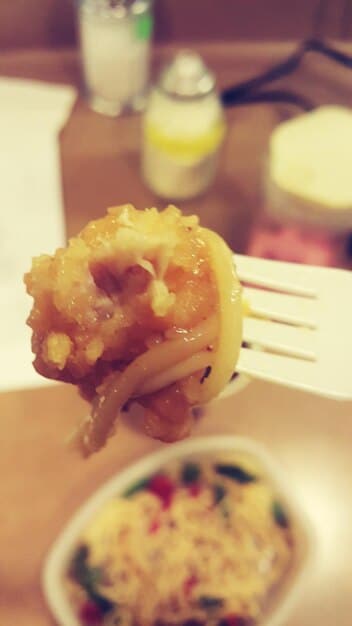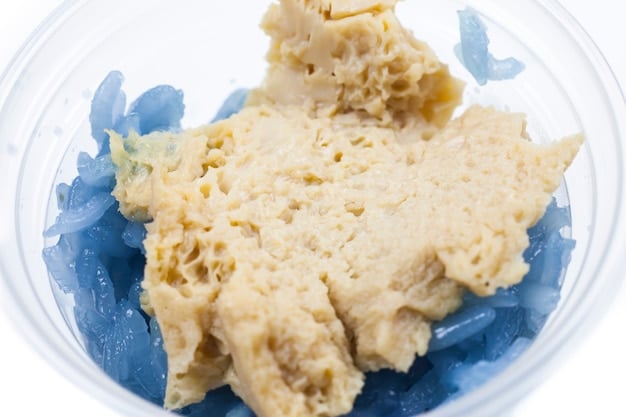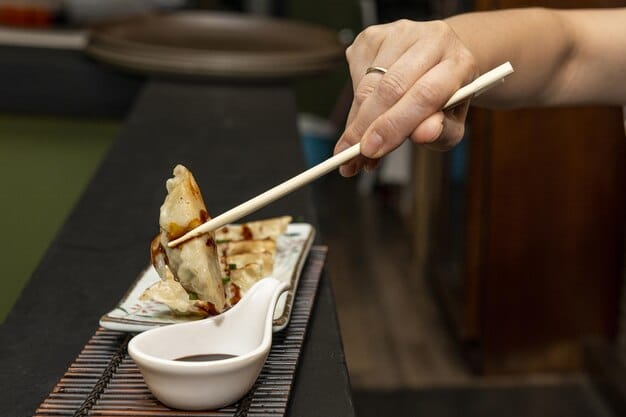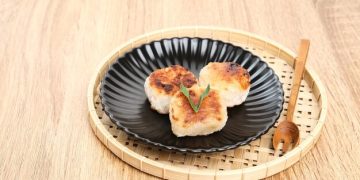Tempura Temptation: Master Crispy, Authentic Japanese Fried Dishes

Tempura Temptation delivers a comprehensive guide to achieving crispy, light, and authentic Japanese fried dishes at home, covering essential techniques, ingredients, and tips for the perfect tempura experience.
Craving that perfectly crispy, light tempura you find in Japanese restaurants? This is your guide to unlocking the secrets of Tempura Temptation: Achieving Crispy, Light, and Authentic Japanese Fried Dishes at home.
Unlocking the Secrets of Authentic Tempura
Tempura, a beloved Japanese dish, is renowned for its delicate, crispy coating and the fresh flavors of the ingredients within. Achieving that perfect tempura texture requires more than just dipping and frying; it’s about understanding the science and art behind the process.
Let’s delve into the essential aspects of creating authentic tempura, from selecting the right ingredients to mastering the frying technique, ensuring your homemade tempura rivals the best restaurants.
The Importance of Fresh Ingredients
Using fresh, high-quality ingredients is paramount for delicious tempura. The batter should complement, not overpower, the natural flavors of the seafood and vegetables.
- Seafood: Shrimp, scallops, and white fish are popular choices. Ensure they are fresh, dry, and properly prepared.
- Vegetables: A variety of seasonal vegetables like eggplant, sweet potato, and green beans add color and texture.
- Tempura Dipping Sauce (Tentsuyu): A flavorful sauce is essential.
Remember, the quality of your ingredients directly impacts the final taste and texture of your tempura. Don’t compromise on freshness.
Mastering the Tempura Batter
The batter is the heart of tempura, creating that signature light and crispy texture. A well-made batter ensures the ingredients are delicately coated and cooked to perfection.
Creating the perfect tempura batter involves understanding the ingredients and techniques that contribute to its unique texture and flavor.
Key Ingredients for a Light Batter
A tempura batter typically consists of flour, cold water, and sometimes egg. The proportions and mixing technique are crucial for achieving a light and airy result.
- Flour: Use cake flour or all-purpose flour with low gluten content.
- Cold Water: Icy cold water helps prevent gluten development.
- Egg: Optional, but adds richness and helps bind the batter.
Techniques for Mixing the Batter
The key to a light tempura batter is to avoid overmixing, which can lead to gluten development and a tough, heavy coating. Lightly combine the ingredients until just moistened, leaving some lumps.
Remember, a lumpy batter is preferable to one that is overworked. The goal is to achieve a delicate balance between binding and airiness.

The Art of Frying Tempura
Frying tempura is a delicate art that requires precise temperature control and timing. The oil temperature should be maintained consistently to ensure the tempura cooks evenly and develops a golden-brown, crispy crust.
Achieving that perfect balance between crispy exterior and tender interior is what elevates tempura from simple fried food to a culinary masterpiece.
Choosing the Right Oil
The type of oil you use can significantly affect the flavor and texture of your tempura. A neutral-flavored oil with a high smoke point is ideal.
- Canola Oil: A popular choice due to its neutral flavor and high smoke point.
- Vegetable Oil: Another option with a neutral flavor and suitable smoke point.
- Sesame Oil: A small amount can be added for a subtle nutty flavor.
Maintaining the Correct Oil Temperature
Maintaining the correct oil temperature is crucial for achieving crispy tempura. Use a thermometer to monitor the oil and adjust the heat as needed to keep the temperature consistent.
Remember to let the excess oil drip off of each piece after frying.
Dipping Sauces and Accompaniments
Tempura is often served with a dipping sauce called tentsuyu, which complements the flavors of the fried ingredients. Common accompaniments include grated daikon radish and ginger, which add refreshing and cleansing elements to the dish.
The dipping sauce and accompaniments enhance the overall tempura experience, providing a balance of flavors and textures that elevate the dish.
Preparing Tentsuyu Dipping Sauce
Tentsuyu is a flavorful dipping sauce made from dashi (Japanese soup stock), soy sauce, mirin (sweet rice wine), and sugar. The proportions can be adjusted to suit your taste preferences.
Simmer the ingredients together to meld the flavors, then let it cool before serving.
Complementary Accompaniments
Grated daikon radish and ginger are classic tempura accompaniments. They help cleanse the palate between bites and add a refreshing contrast to the rich, fried flavors.
- Daikon Radish: Grated finely to provide a light, peppery flavor.
- Ginger: Grated or thinly sliced to add a zesty, aromatic note.
Tips for Achieving Extra Crispy Tempura
Achieving extra crispy tempura is the ultimate goal for many home cooks. Several techniques can help you enhance the crispiness of your tempura.
From using the right ingredients to mastering the frying technique, these tips will guide you towards achieving that perfect, restaurant-quality crisp.
Using Cold Ingredients
Keeping all ingredients cold, including the flour, water, and even the mixing bowl, helps prevent gluten development and promotes a crispier batter.
- Chill the Flour: Store the flour in the refrigerator before using it.
- Use Ice Water: Ensure the water is icy cold to inhibit gluten formation.
- Cool the Bowl: Place the mixing bowl in the freezer for a few minutes before mixing the batter.
These simple steps can make a significant difference in the final texture of your tempura.

Troubleshooting Common Tempura Problems
Even with the best techniques, tempura can sometimes present challenges. Understanding common problems and how to address them is essential for achieving consistent results.
Let’s explore some frequent issues and their solutions, ensuring your tempura turns out perfectly every time.
Batter That’s Too Heavy
If your tempura batter is too heavy, it’s likely due to overmixing or using warm ingredients. Make sure to use cold ingredients and mix the batter as little as possible.
A light hand and cold temperatures are key to preventing a heavy batter.
Tempura That’s Not Crispy Enough
If your tempura isn’t crispy enough, the oil temperature may be too low, or you may be overcrowding the fryer. Maintain the oil temperature between 325-350°F (160-175°C) and fry in small batches.
By following these guidelines, you’ll be well on your way to mastering Tempura Temptation: Achieving Crispy, Light, and Authentic Japanese Fried Dishes.
| Key Aspect | Brief Description |
|---|---|
| 🍤 Fresh Ingredients | Use high-quality seafood and seasonal vegetables for the best flavor. |
| 🧊 Cold Batter | Keep the batter icy cold to prevent gluten development and ensure crispiness. |
| 🔥 Oil Temperature | Maintain a steady oil temperature of 325-350°F (160-175°C) for even cooking. |
| 🍥 Tentsuyu Sauce | Serve with traditional tentsuyu dipping sauce and grated daikon for the full experience. |
Frequently Asked Questions
▼
Cake flour or all-purpose flour with low gluten content is ideal for tempura. These flours create a lighter batter and prevent the tempura from becoming too heavy or doughy.
▼
To keep the batter cold, use ice water, chill the flour in the refrigerator beforehand, and consider placing the mixing bowl in the freezer for a few minutes before mixing.
▼
The ideal oil temperature for frying tempura is between 325-350°F (160-175°C). Use a thermometer to monitor the temperature and adjust the heat as needed to maintain consistency.
▼
Yes, you can reuse tempura oil a few times if it remains clean and doesn’t develop a bad odor. Strain the oil after each use to remove any food particles and store it in a cool, dark place.
▼
Common vegetables used in tempura include eggplant, sweet potato, green beans, bell peppers, and mushrooms. Seasonal vegetables are always a great choice for their fresh flavor.
Conclusion
Mastering the art of tempura requires attention to detail, from selecting fresh ingredients to maintaining the perfect oil temperature. By following these tips and techniques, you can create crispy, light, and authentic Japanese fried dishes that will impress your family and friends.





